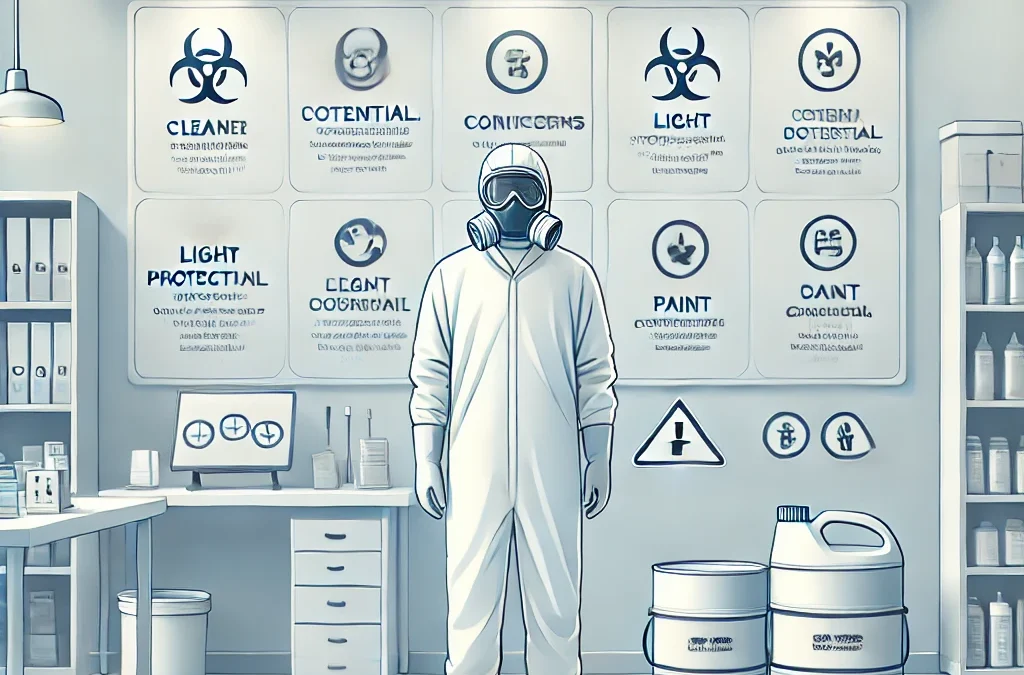Chapter 7: Carcinogens in the Workplace and Community
For many people, cancer prevention is a personal journey—centered around choices at home and in the kitchen. But what about the environments where we work, live, and spend most of our waking hours?
Occupational and environmental exposures can be hidden sources of long-term cancer risk, especially when we’re not aware of the hazards or don’t have access to safer alternatives. This chapter explores known workplace and community carcinogens, how they impact your health, and what you can do to reduce your exposure and advocate for a safer world.
Understanding Occupational Carcinogens
Occupational carcinogens are substances or exposures found in certain jobs that increase the risk of developing cancer. These risks are often the result of long-term, low-dose exposure to chemicals, dust, radiation, or fumes in work environments that lack proper protective measures.
Common Workplace Carcinogens Include:
-
Asbestos – Found in construction, shipyards, and older buildings (linked to mesothelioma and lung cancer)
-
Benzene – A solvent used in chemical and petroleum industries (linked to leukemia)
-
Diesel exhaust – Common in transportation, mining, and warehousing jobs (linked to lung cancer)
-
Silica dust – Found in mining, glass, and stone-cutting industries (linked to lung cancer)
-
Formaldehyde – Used in labs, mortuaries, and some manufacturing (linked to nasopharyngeal cancer)
-
Ionizing radiation – A hazard for healthcare workers, radiology technicians, and airline crews (linked to several cancers)
Many of these substances are classified as Group 1 Carcinogens by the International Agency for Research on Cancer (IARC)—meaning there’s sufficient evidence they cause cancer in humans.
The Silent Risk: Low-Level, Long-Term Exposure
Unlike an accident or a one-time event, occupational and community exposures often involve low-level, chronic contact that can silently build up over time. Cancer can develop decades after the initial exposure, making it difficult to trace the cause.
For example:
-
A factory worker exposed to benzene in their 20s may not develop leukemia until their 50s.
-
Construction workers exposed to asbestos may not develop mesothelioma until 30–40 years later.
That’s why awareness, early detection, and protective action are so important.
Community-Based Environmental Hazards
Your neighborhood or city can also be a source of cancer-promoting exposures. These include:
-
Air pollution from nearby highways, factories, or airports
-
Contaminated drinking water from industrial runoff, outdated piping, or agricultural chemicals
-
Soil contamination from landfills, toxic waste dumps, or pesticide use
-
Proximity to cell towers or electrical substations (ongoing research on EMF exposure)
-
Urban “heat islands” and poor access to green spaces, which increase stress and reduce physical activity
Environmental injustice is also a concern—low-income and minority communities often face higher exposure to carcinogens due to zoning policies, industrial development, and lack of regulatory enforcement.
What You Can Do: Personal Protection and Advocacy
1. Know Your Risks
-
Research your industry and community using databases from OSHA (Occupational Safety and Health Administration), EPA (Environmental Protection Agency), and IARC.
-
Check local environmental quality reports for air, water, and soil data.
2. Take Protective Measures at Work
-
Wear personal protective equipment (PPE) properly and consistently
-
Follow safety protocols and training programs
-
Request proper ventilation, air filters, and hazard signage
-
Report unsafe conditions to your supervisor or OSHA representative
3. Reduce Community Exposure
-
Use high-quality water and air filters at home
-
Avoid using pesticides or chemical lawn treatments
-
Support clean energy and anti-pollution initiatives in your area
-
Plant trees and install greenery to improve local air quality
4. Advocate for Change
-
Join or support environmental and labor safety organizations
-
Petition for stricter regulations on toxic industrial emissions
-
Vote for policies and leaders that support public health and environmental justice
-
Participate in community clean-up or awareness events
Case Study: The Asbestos Legacy
Asbestos was once hailed as a miracle material for its fireproof and insulating properties. It was used extensively in construction, shipbuilding, and even consumer products. But decades later, it became clear that asbestos exposure was causing rare, deadly cancers like mesothelioma.
Despite bans in many countries, asbestos is still not fully banned in the U.S. And its legacy continues to impact workers, veterans, and families exposed in homes or schools built before the 1980s.
This case shows the long lag time between exposure and disease—and highlights why early action is critical.
In Summary
You can’t always control your work or neighborhood environment—but you can take steps to minimize exposure and protect your long-term health. Just as important, you can help drive change by raising awareness, advocating for safer policies, and supporting community resilience.
Cancer prevention isn’t just about what you eat or how you move—it’s also about the world you live and work in every day.
In the next chapter, we’ll explore how the digital age is introducing new concerns about screen time, EMFs, and their impact on your body’s natural rhythms and resilience.
Save Up to 80% on Your Prescription Drugs
 Looking to save big on your prescriptions? GlobalPharmacyMeds.to helps you access high-quality medications at unbeatable prices—save up to 80% by filling your prescriptions through our trusted international pharmacies!
Looking to save big on your prescriptions? GlobalPharmacyMeds.to helps you access high-quality medications at unbeatable prices—save up to 80% by filling your prescriptions through our trusted international pharmacies!
Get the same FDA-approved medications at a fraction of the cost while ensuring safety, reliability, and convenience. Why overpay when you can get affordable, authentic prescriptions delivered to your door?
Take control of your healthcare costs today with GlobalPharmacyMeds.to!


